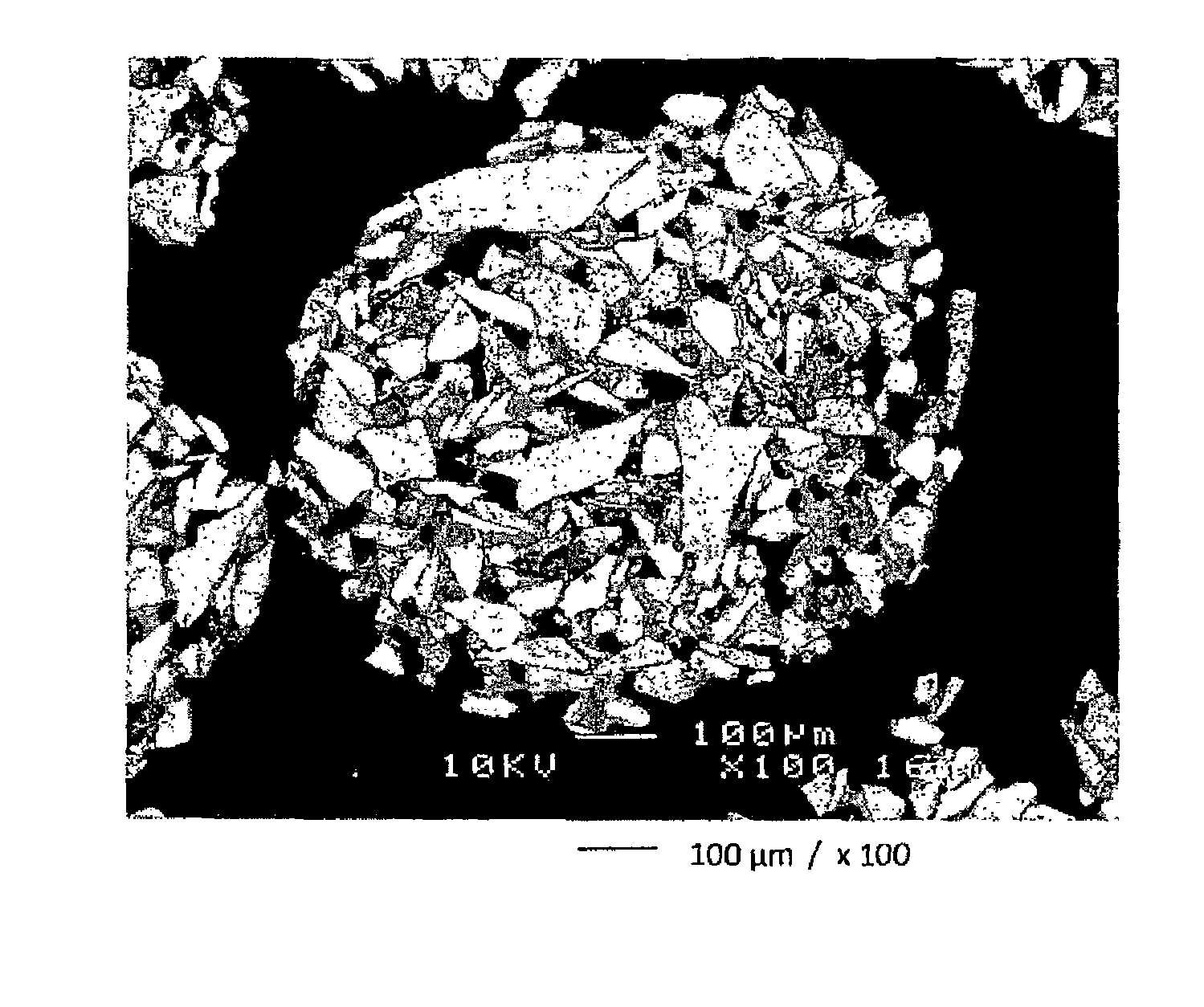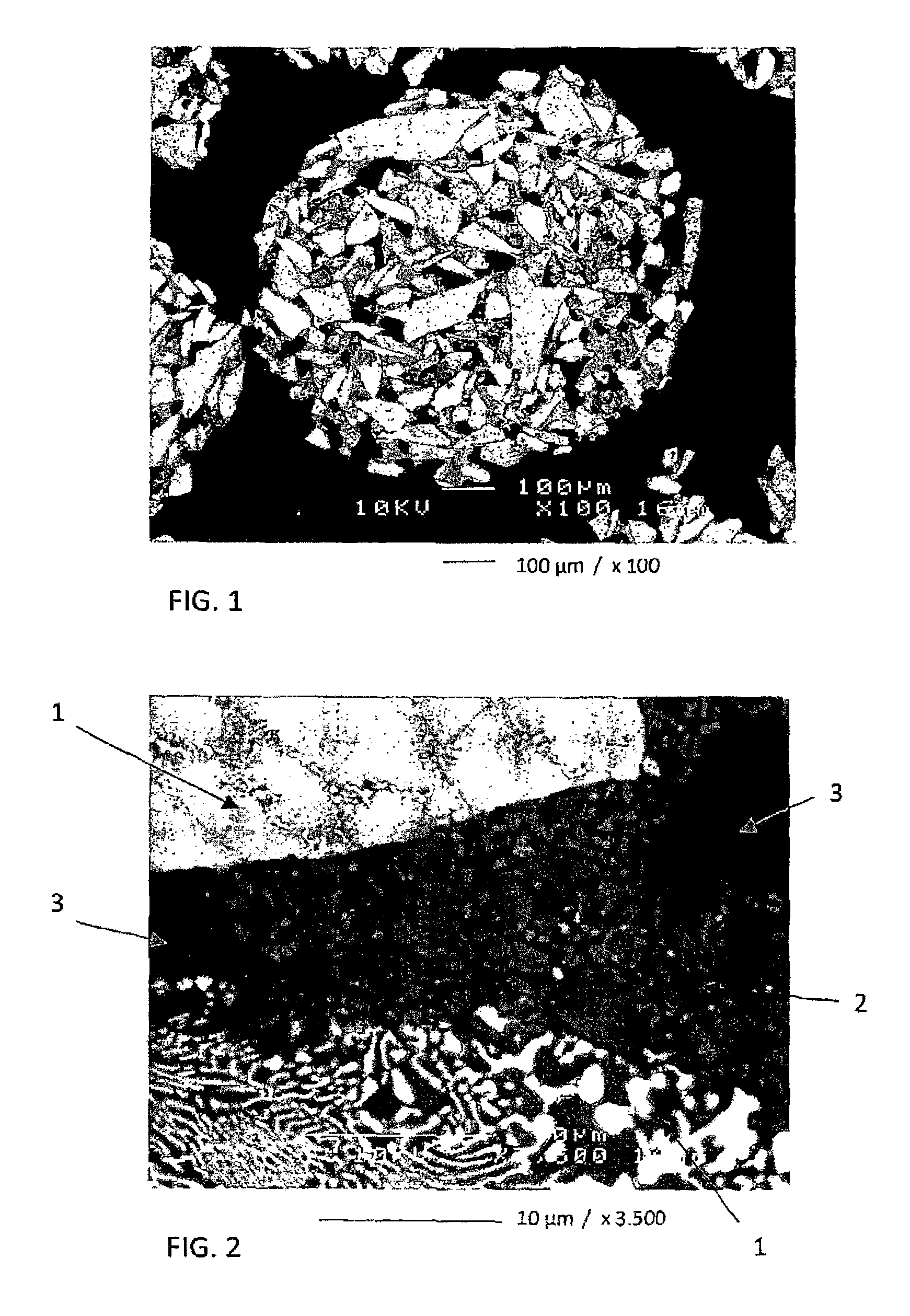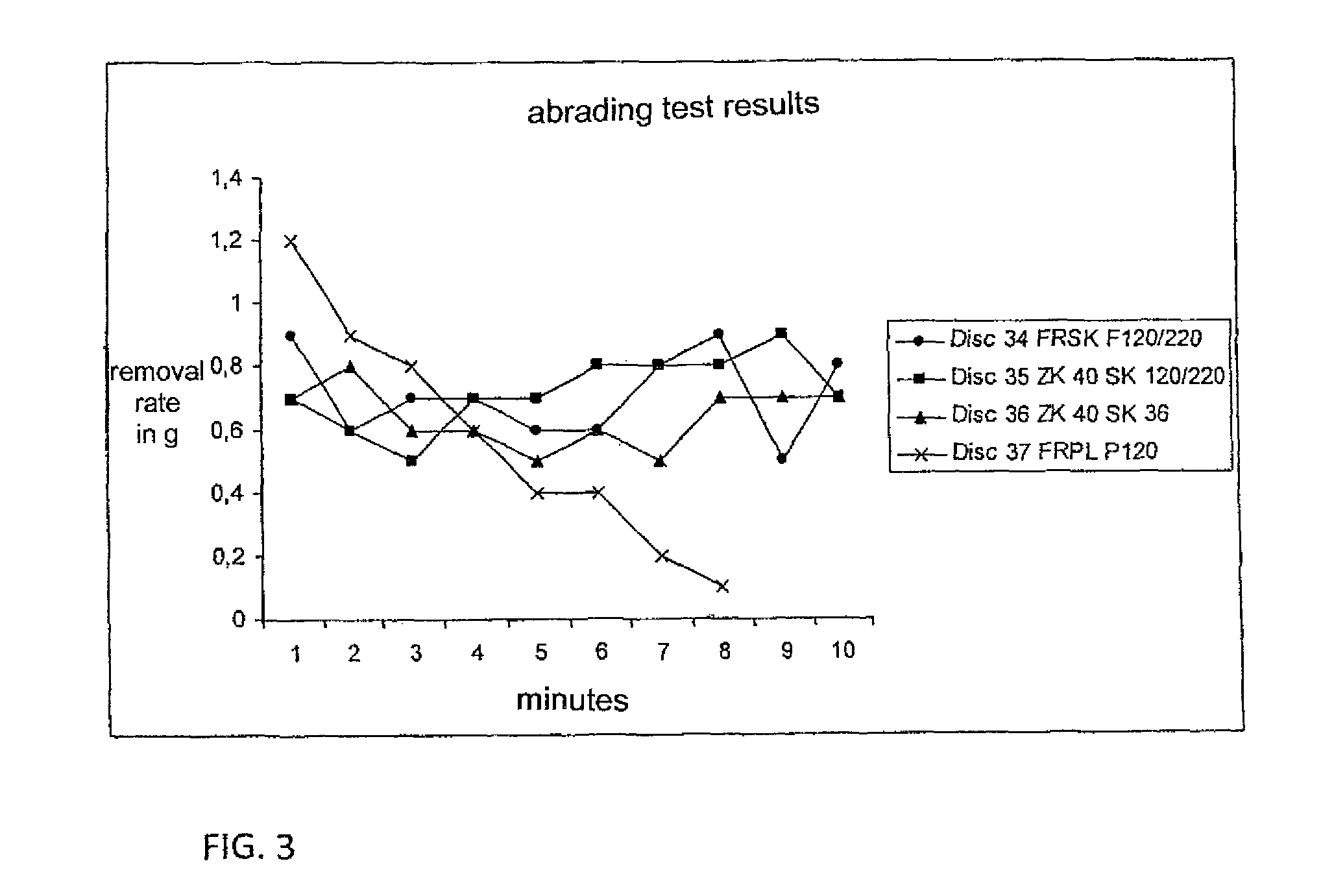Abrasive grain agglomerates, process for the production thereof and the use thereof for producing abrasives
a technology of agglomerates and abrasives, which is applied in the direction of natural mineral layered products, solid waste management, synthetic resin layered products, etc., can solve the problems of less strong bonding, inability of organic binder materials, and inability of temperature sensitive abrasive grains to be used in organic binder systems, etc., to achieve the effect of increasing the number of bonding bridges, increasing the fracture resistance of agglomerates, and strengthening the total a
- Summary
- Abstract
- Description
- Claims
- Application Information
AI Technical Summary
Benefits of technology
Problems solved by technology
Method used
Image
Examples
Embodiment Construction
[0048]FIG. 1 shows a scanning electron microscope image of a granulate grain according to the present invention in 100-fold enlargement, wherein the primary grains are used as abrasive grains on the basis of zirconium corundum in grit size P120 and P220 in a ratio of 1:2. The abrasive grains are shown as light areas, the bonding bridges are shown as gray areas between the light abrasive grains and the pores are shown as dark areas. The abrasive grain agglomerate possesses a high porosity and the single abrasive grains are bonded to each other via relatively small bonding bridges- or links, wherein the agglomerate has a relatively incompact appearance. The more surprising are the high grain strength values that are measured on them and which reflect the enormously high linkage force of the aluminum silicate containing binder. In the present case, the abrasive grain agglomerate itself has a diameter of about 850 μm.
[0049]In this illustration, it becomes clear from the selected grain s...
PUM
| Property | Measurement | Unit |
|---|---|---|
| temperatures | aaaaa | aaaaa |
| grain size | aaaaa | aaaaa |
| grain size | aaaaa | aaaaa |
Abstract
Description
Claims
Application Information
 Login to View More
Login to View More - R&D
- Intellectual Property
- Life Sciences
- Materials
- Tech Scout
- Unparalleled Data Quality
- Higher Quality Content
- 60% Fewer Hallucinations
Browse by: Latest US Patents, China's latest patents, Technical Efficacy Thesaurus, Application Domain, Technology Topic, Popular Technical Reports.
© 2025 PatSnap. All rights reserved.Legal|Privacy policy|Modern Slavery Act Transparency Statement|Sitemap|About US| Contact US: help@patsnap.com



